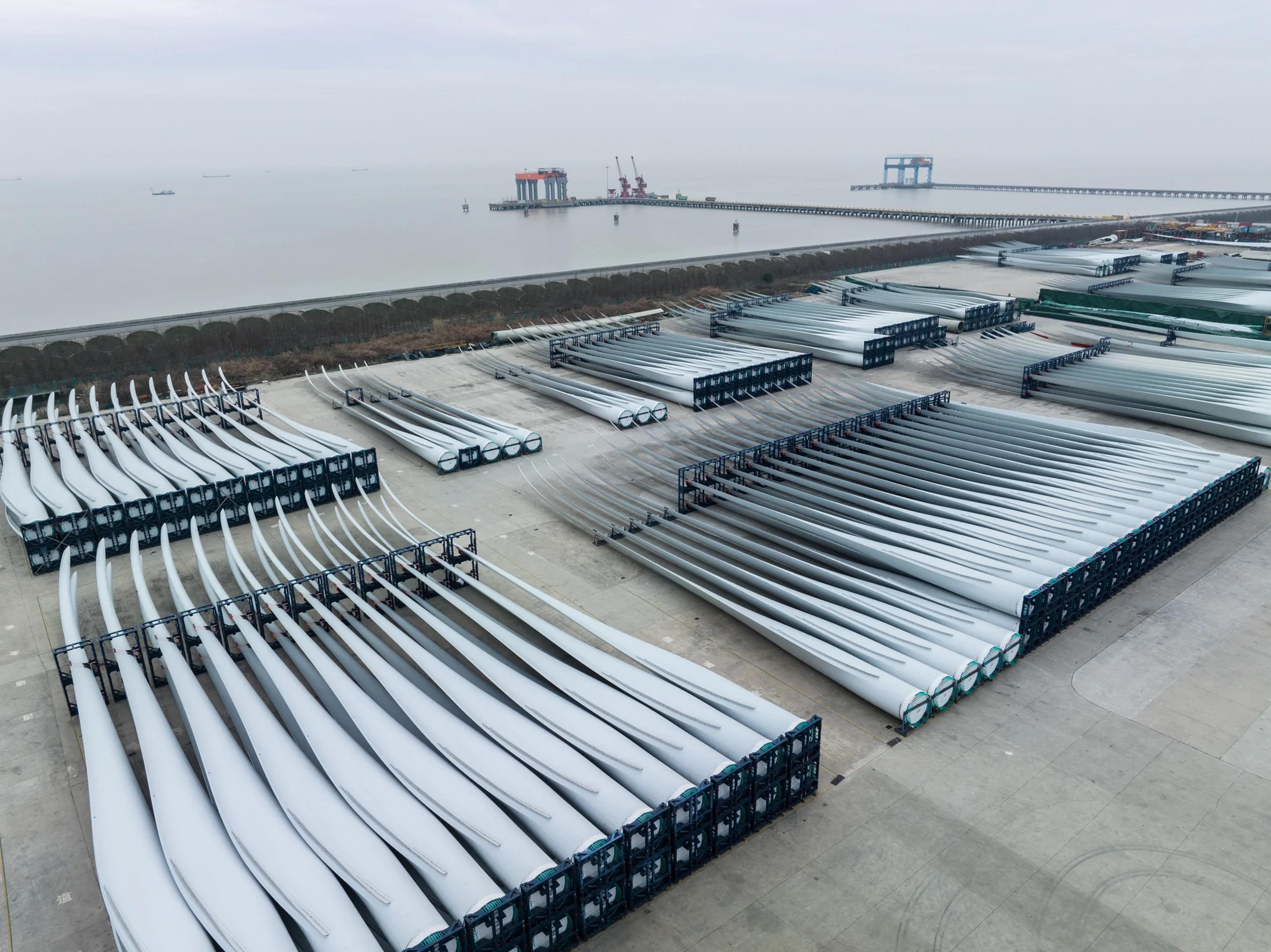“We will be able to produce more energy with fewer materials”

A innovation project supported by EUDP is looking to reduce weight in wind turbine blades, which could potentially boost production and reduce price.
A modern wind turbine blade is a technological triumph.
A sandwich of fiberglass and carbon fibers, balsa wood or PET foam, and resin designed with the sole purpose of achieving the optimal combination of strength and weight, so that with the fewest possible resources, ever longer blades can be built to harness wind power to the fullest.
Recent developments have extended the length of blades to over 100 meters. As a result, wind turbine blade manufacturers face several significant challenges:
The blade mass must be further reduced; development time must be shortened, and productivity increased.
Therefore, optimizing the core material is essential for designing lighter blades that can be made longer for the next generation of megawatt turbines.
Weight is the starting point for the EUDP-supported innovation project OptiCore Platform, where a number of partners, along with Energy Cluster Denmark, are working on optimizing the mass, resin flow, and the mechanical properties of the core material in the blades.
“Longer blades are a trend in the industry today. Therefore, we need to reduce the weight,” says Sergio Gutiérrez Coronil, blade materials engineer at Siemens Gamesa Renewable Energy.
More Efficient and Sustainable
The goal is to develop design software for the core material, which, based on the blade's local geometry and materials, can optimize resin flow, mechanical properties, and the weight of the core material.
These parameters – and the production costs – are all interdependent, so it is very complex to explore the solution space for the core material.
The goal is also to develop an optimization algorithm that can quickly explore the solution space based on the blade manufacturer’s design goals.
“Today, we work with different materials that have good and bad properties when it comes to being distributed in the blade,” says Adrian Dibbern, materials engineer at Nordex Energy.
“The goal is to save resin, so we get a blade that is more efficient, sustainable, and recyclable.”
The basis for the project is the modern design processes for wind turbine blades. By focusing on an optimized resin flow pattern through the core material, development time and blade weight can be reduced, as well as the risk of reduced material properties and increased resource consumption for prototypes.
Benefiting the Entire Value Chain
According to Jon Spangenberg, associate professor at DTU Civil and Mechanical Engineering, it is crucial to understand and optimize resin flow in the quest for efficient and sustainable wind turbine blades:
“Optimizing resin flow is at the core of our investigation and must ensure that every drop counts for a greener future with lighter, stronger blades, which supports our goal of producing more energy with fewer resources,” he says.
The project aims to build a platform that will reduce resource consumption and costs in blade production, thus significantly improving competitiveness. Not least, according to Simon M. Kristoffersen, system and process expert at Gurit, the solution will make it possible to build even more sustainable blades:
“We will be able to produce more energy with fewer materials. This will benefit production across the entire supply chain for manufacturing wind turbine blades,” he says.
Rob Pierce, senior researcher at DTU Wind and Energy Systems, emphasizes that even small improvements make a big difference.
“As the blades get larger, the importance of reducing weight increases. Every percentage we can cut from the weight has a huge impact on the ability to extend the blade and increase energy output. The lighter, the more efficient,” he says.
A successful OptiCore Platform project is expected to enable a shorter production time and reduced material consumption in the design phase. Additionally, the reduced blade weight will allow for 2% longer blades, corresponding to a 4% increase in rotor area and thus higher energy production.
“By fully integrating the OptiCore platform, the expected effect is better competitiveness in terms of reduced blade costs and an overall reduced LCOE (Levelized Cost of Energy) for wind energy. There is potential in that,” says Anne Bjerre Hammer, project manager at Energy Cluster Denmark.
Latest news
Skibsbyggerivej 5, 3rd floor.
9000 Aalborg
Navitas
Inge Lehmanns Street 10
8000 Aarhus C
House of Offshore Innovation
Channel 1
6700 Esbjerg
Port House
Vendersgade 74
7000 Fredericia
BLOXHub
Bryghusgade 8
Entrance C, 3. sal
1473 København
Alsion
Alsion 2
6400 Sønderborg
Frederiksborgvej 399
bygning 108
4000 Roskilde
©Energy Cluster Denmark 2025



